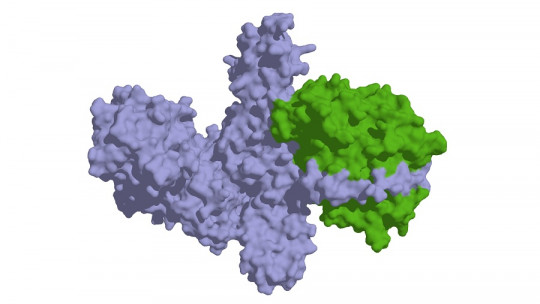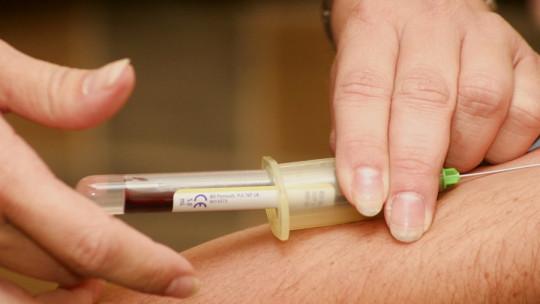
Botulinum toxin, better known as “botox” is a substance widely used in aesthetic medicine, but also in other health fields such as ophthalmology or pediatrics.
In this article we will learn what it consists of, what its effects are and the main applications of this substance. We will also see how, in addition to producing benefits, it can also end up generating an addiction in people obsessed with their physique or afraid of aging.
Botulinum toxin: what is it and how does it work?
Botulinum toxin, commonly known as “botox”, is a substance widely used in aesthetic medicine. On a chemical level, It is a neurotoxin produced by a bacteria called Clostridium botulinum
What this substance does is block the release of acetylcholine (a neurotransmitter necessary to produce muscle contraction), which results in temporary muscle paralysis. That is to say, It has the function of paralyzing or reducing muscle function (or muscles) on which it is applied.
What is it for?
Its aesthetic use was approved in 2002. Currently, It is considered a very non-invasive cosmetic treatment, and the most requested worldwide In addition, botulinum toxin is considered a safe substance if administered correctly and by a professional.
In addition to being very present in the field of aesthetic medicine, it also helps solve other health problems, such as childhood spasticity.
Let’s see how botulinum toxin has various uses and applications. Some of them are:
1. Correct or soften wrinkles
Mostly, It is used on the face to correct dynamic or static wrinkles (expression). Dynamic wrinkles are those that originate from muscle activity itself, and static or expression wrinkles are those caused by the natural aging of the skin.
But exactly where is botulinum toxin applied to the face? It is mainly applied to the upper half of the face. Generally, the most frequent areas of application are two: crow’s feet and between the eyebrows.
2. Ophthalmological problems
Botulinum toxin is not only used for aesthetic purposes, but is also used in functional pathologies. In the field of ophthalmology, It is used to treat exophthalmos, and blepharospasms
2.1. Exophthalmus
An exophthalmos is the projection or protrusion of the eyeball outwards ; They are the well-known “bulging eyes”. It may involve one eye or both, depending on the cause.
2.2. Blepharospasms
Is about a spasmodic contraction of the muscle around the eyes (orbicularis muscle), involuntary and repetitive. This contraction causes dystonias, which are strange or abnormal postures and movements.
3. Childhood spasticity
Botulinum toxin also allows treating certain neurological diseases that cause muscle hyperactivity, such as childhood spasticity. This appears especially in childhood cerebral palsy, and consists of a movement disorder, associated with the nervous system, that causes some muscles to tense and contract.
What botulinum toxin does here is reduce hyperactivity and muscle tone, allowing longitudinal muscle growth, which helps avoid fixed contractures typical of spasticity.
4. Strabismus
Strabismus is the deviation of the normal visual line of one of the eyes (or both), causing the visual axes not to have the same direction (this is what is commonly known as being “cross-eyed”).
Botulinum toxin can also be applied to strabismus. How does it act? Exerting a paralyzing effect on cholinergic nerve endings which block the release of acetylcholine, causing the muscle to relax.
Pharmacological effect
But, specifically, how and where does botulinum toxin act? At a pharmacological level, what it does is act at the level of the neuromuscular junction; In this transition zone or “junction” between the muscle and the peripheral nerve, the release of acetylcholine occurs.
Botulinum toxin blocks the release of acetylcholine in the injected area, resulting in temporary muscle paralysis.
The effect it produces does not entail any physical injury to the nervous structures which is why it is said to be a fairly safe substance.
botox addiction
But botulinum toxin also has the “other side of the coin.” And, especially in the field of aesthetic medicine, many people become addicted to it.
People who are addicted to botox end up hooked on its effects, repeatedly resorting to cosmetic surgery to avoid aging at all costs That is why you must be cautious and take into account the possible harmful effects of misusing it, since, like everything, nothing in excess is good.
Thus, although it is true that botulinum toxin itself is a safe and non-invasive substance, addictions will always be harmful, and an addiction to botox is often linked to some other psychological disorder, such as dysmorphophobia or body dysmorphic disorder. This is a somatoform disorder characterized by excessive worry about a real or imagined defect, perceived in some part of the body.








